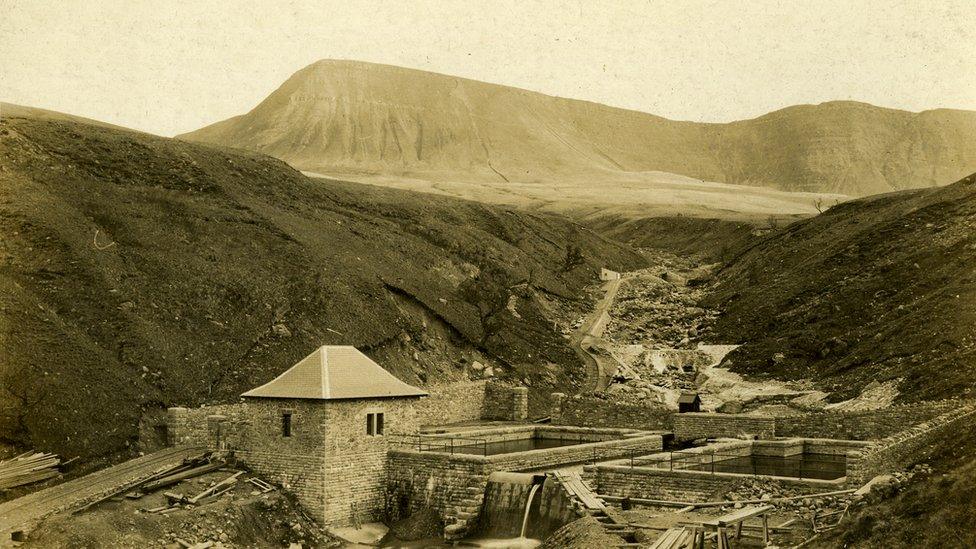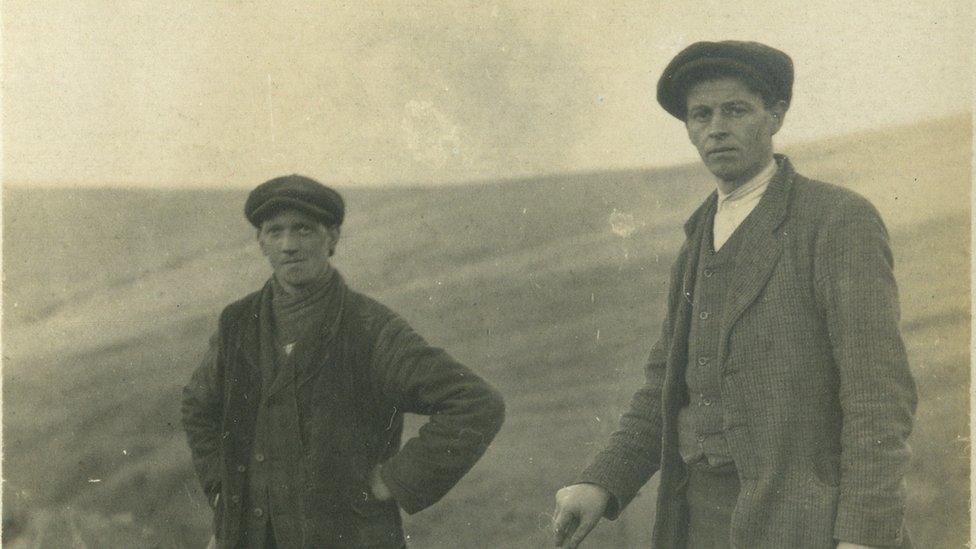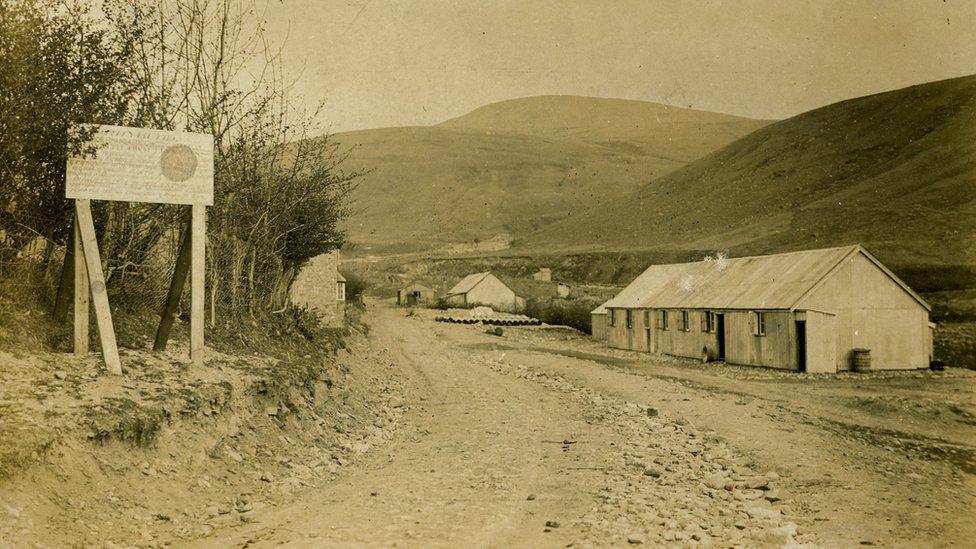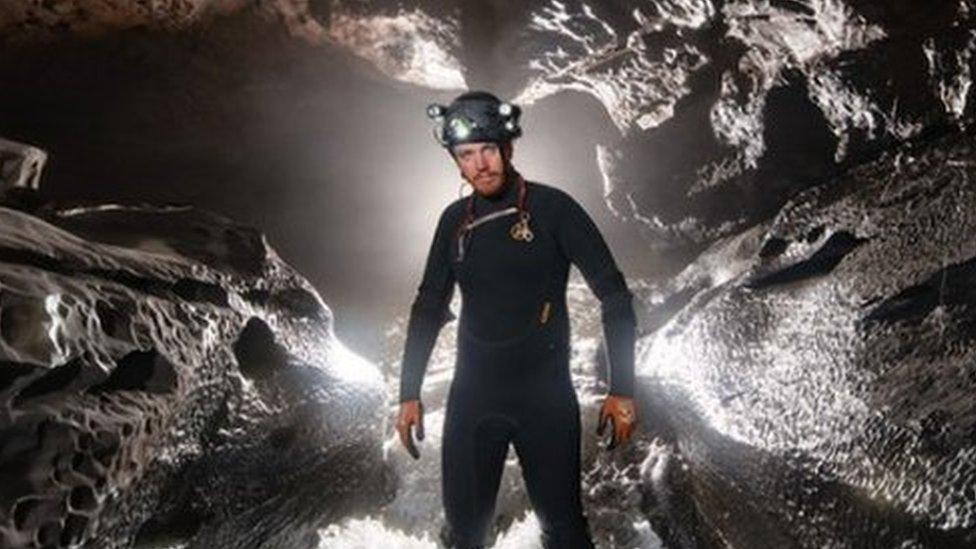Brecon Beacons dam built by war objectors is listed
- Published

About 100 conscientious objectors were sent to build the dam at Llyn y Fan Fach
A Brecon Beacons dam built by about 100 conscientious objectors has been given Grade II listed status.
The project at Llyn y Fan Fach, Carmarthenshire, was built by the men whose beliefs stopped them from fighting in World War One.
While about 270,000 Welshmen served in that conflict, about 900 felt they could not.
Many of these so-called "conchies" were given back-breaking work instead, and conditions at the dam were dreadful.
Wales' heritage body Cadw, which has listed the dam, defines the status as "intended to help manage change and protect the building, its setting and its features from unsympathetic works that could damage its special interest".
Aled Eirug, author of The Opposition to the Great War in Wales 1914-1918, said conditions for the Carmarthenshire dam builders were so bad prisoners of war (PoWs) were not allowed to endure them.
Work on the project had begun with a specialist workforce of 175 Irishmen.
"Construction of the dam to provide water to Llanelli and eastwards began in 1912, but as war broke out the Irish labour force soon dissipated," Dr Eirug said.

Workers at the site endured terrible conditions
It was needed to provide water to heavy industry in Llanelli and Swansea.
"The government tried to replace them with PoWs, but the harshness of the work and security worries soon curtailed that," said Dr Eirug.
After conscription was introduced in 1916 objecting to war became an active decision.
Prime Minister David Lloyd George imposed his will to make refusing to serve a bleak prospect.
The South Wales Daily News reported that the scheme was "an unqualified success".
"The men and expert supervision have bought about the complete transformation of the sense of desolation and disaster, which met their eyes on their first arrival," the paper said.
It outlined that about 85 men at the camp were from Lancashire and the Midlands.
"That was because there was a rule that nobody could work within a radius of, say, 50 miles from where they lived, otherwise this was seen as being too cosy for them," Dr Eirug said.

The men, mostly from Lancashire and the Midlands, lived in these buildings
"The policy was to send men right away from the districts with which they were familiar."
The South Wales Daily News said the men came from an array of different trades, professions and religious backgrounds.
"A considerable number of men are socialists and their objection to war is moral and economic," it added.
Reaching 300m (990ft) above sea level, the objectors toiled to turn the glacial lake into a reservoir and pipes to carry water 25 miles to Llanon and Llanelli were laid.
Conditions were terrible. In 1917 an independent report of conditions described the camp as "a sea of men and mud".
It was so isolated visitors from Gorseinon who came to hold a concert had to abandon their car and walk the last two miles.

Yr argae heddiw
The inspection showed food rations had been halved and workers did not have access to rail travel from the camp, which was free to soldiers.
Dr Eirug said: "They were very keen that the conscientious objectors weren't seen to have advantages compared to people in the Army, for example, which is why they made it so difficult for them to get away from there."
Conscientious objectors were demobbed in 1919 along with those who had fought. They were banned from receiving medals for their efforts.
Cadw head Gwilym Hughes said the listing would ensure the dam's legacy would be kept alive.
He said: "The reservoir is an unusual and rare example of the wider contribution made by the objectors on nationally important, but not war-related work.
"We're proud that we will now be able to protect Llyn y Fan Fach and continue to share its story."
Related topics
- Published16 February 2022

- Published25 January 2022

- Published1 September 2022
